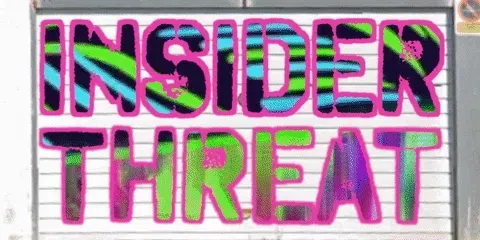Managing digital assets in large scale cloud ecosystems is a pressing challenge. Organizations accumulate millions of assets, databases, virtual machines, logs, models each needing proper ownership tracking for security, compliance, and cost optimization.
Traditional methods like manual tagging, role-based access control (RBAC), and static access logs are inefficient, outdated, and prone to security breaches.
To solve this, I developed an AI based Actor-Asset Relationship Modeling System, #US Patent 10511606 and 10388040, that dynamically discovers asset ownership using interaction based probability models.
In this article, we’ll dive into:
- The flaws of traditional asset management
- Graph based modeling of ownership relations
- Machine learning algorithms for dynamic ownership scoring
- Real world implementation using Python, NetworkX, and FAISS
- Deployment strategies at scale with distributed databases and cloud APIs
Why Static Asset Ownership Tracking Fails
Cloud assets can be highly dynamic and volatile often changing hands between users, services and automated processes. Consider these real world challenges
-
Security Risks: Orphaned assets (e.g., unused S3 buckets, VM instances) become security vulnerabilities.
-
Compliance Failures: Auditing data lineage is complex when ownership isn’t properly tracked.
-
Cost Inefficiencies: Resources continue accruing costs, even after their owners leave the company.
A static RBAC approach cannot adapt to this fluid ownership model requiring a proactive approach.
The Solution? Graph-Based Actor-Asset Ownership Modeling
Instead of manually assigning asset ownership we use an actor-asset graph, where:
- Nodes represent users, services or service accounts.
- Edges represent interactions (e.g., API calls, file access, logins, modifications).
- Edge weights are time based decayed scores indicating interaction strength.
Let’s Implement it?
- Graph Construction with NetworkX
import networkx as nx
import numpy as np
#Initialize directed graph
G = nx.DiGraph()
#Sample interactions (User, Asset, Timestamp)
interactions = [
("User_A", "Asset_1", 100),
("User_B", "Asset_1", 200),
("User_A", "Asset_1", 300),
("User_C", "Asset_1", 400),
("User_B", "Asset_1", 500),
]
#Add edges (user -> asset) with timestamps
for user, asset, timestamp in interactions:
G.add_edge(user, asset, weight=timestamp)
print("Graph Nodes:", G.nodes)
print("Graph Edges:", G.edges(data=True))
- Decaying Historical Interactions with Exponential Time Decay
Older interactions should contribute less weight to ownership scoring. We apply exponential decay, this ensures recent activity dominates the ownership score.
#Apply decay function
def apply_decay(timestamp, current_time, decay_rate=0.01):
return np.exp(-decay_rate * (current_time - timestamp))
#Compute ownership scores
current_time = 600 #Assume current time
ownership_scores = {}
for user, asset, data in G.edges(data=True):
score = apply_decay(data['weight'], current_time)
ownership_scores[user] = ownership_scores.get(user, 0) + score
#Rank users by highest ownership score
sorted_owners = sorted(ownership_scores.items(), key=lambda x: x[1], reverse=True)
print("Ownership Scores:", sorted_owners)
- Ownership Prediction
Once a graph is built, we apply Graph Neural Networks (GNNs) to learn asset ownership patterns.
import torch
import torch.nn.functional as F
from torch_geometric.nn import GCNConv
from torch_geometric.data import Data
#Convert graph to PyTorch Geometric format
edge_index = torch.tensor(list(G.edges)).t().contiguous()
x = torch.tensor(np.random.rand(len(G.nodes), 128), dtype=torch.float) # 128D embeddings
#Define Graph Convolutional Network (GCN)
class OwnershipGCN(torch.nn.Module):
def __init__(self):
super().__init__()
self.conv1 = GCNConv(128, 64)
self.conv2 = GCNConv(64, 1) # Output ownership score
def forward(self, x, edge_index):
x = self.conv1(x, edge_index)
x = F.relu(x)
x = self.conv2(x, edge_index)
return x
#Initialize and train
model = OwnershipGCN()
optimizer = torch.optim.Adam(model.parameters(), lr=0.01)
for epoch in range(50):
optimizer.zero_grad()
out = model(x, edge_index)
loss = F.mse_loss(out, x.mean(dim=0)) # Self-supervised learning
loss.backward()
optimizer.step()
print(f"Epoch {epoch+1}, Loss: {loss.item()}")
- Optimizing for Scale: FAISS and Vector Search for Fast Ownership Retrieval
For real time ownership lookup, embeddings can be stored in FAISS (Facebook AI Similarity Search) for efficient retrieval.
import faiss
#Convert learned GNN embeddings to NumPy
learned_embeddings = model(x, edge_index).detach().numpy()
#Create FAISS index
d = 128 #Embedding dimensionality
index = faiss.IndexFlatL2(d)
index.add(learned_embeddings)
#Query for top-k most similar asset owners
query_vector = learned_embeddings[0].reshape(1, -1) #Query with first user
distances, indices = index.search(query_vector, k=5)
print("Top-5 most likely asset owners:", indices)
-
Cloud-Scale Deployment: Integrating AI-Driven Ownership Tracking into Cloud Services
A production-ready system integrates with cloud IAM systems:
- AWS IAM - Enforce dynamic access policies
- Azure Active Directory - Automate resource reassignment
- Google Cloud IAM - Secure data lineage tracking
For Example, if an asset is abandoned, an ownership score below threshold triggers automatic reassignment or deletion alerts.
threshold = 0.1 #Define ownership confidence threshold
for user, score in sorted_owners:
if score < threshold:
print(f"🚨 Alert: {user} has low ownership confidence!")
Real World Applications of AI Powered Asset Ownership
- Cybersecurity & Insider Threat Detection - Detect orphaned accounts with access to critical data.
- AI Model Governance - Ensure proper lineage tracking for AI datasets.
- Regulatory Compliance (GDPR, HIPAA, SOC2) - Provide automated audit trails.
- Cloud Cost Optimization - Identify and delete unused resources.
Why Dynamic Ownership Tracking is the Future
Traditional static access policies cannot keep up with the scale and dynamism of modern cloud ecosystems. This model solves this by:
- Improving security - Prevents abandoned asset vulnerabilities.
- Enhancing compliance - Ensures traceable asset ownership.
- Optimizing costs - Reduces waste from unused cloud resources.
As cloud infrastructure grows, smart governance will be essential for scalable, secure and cost effective cloud management.
The future of cloud security isn’t just about access control - it’s about understanding ownership at scale!


